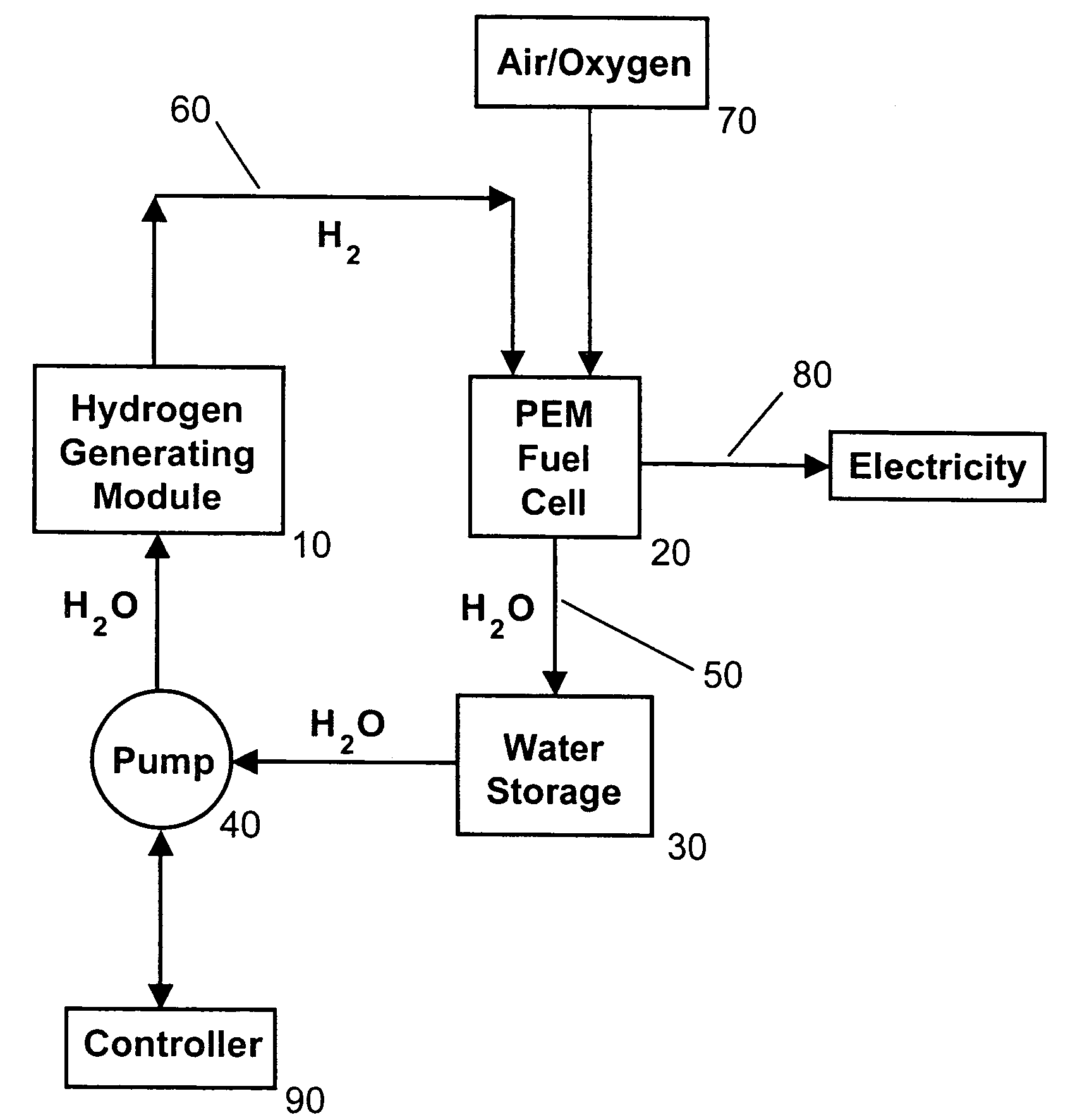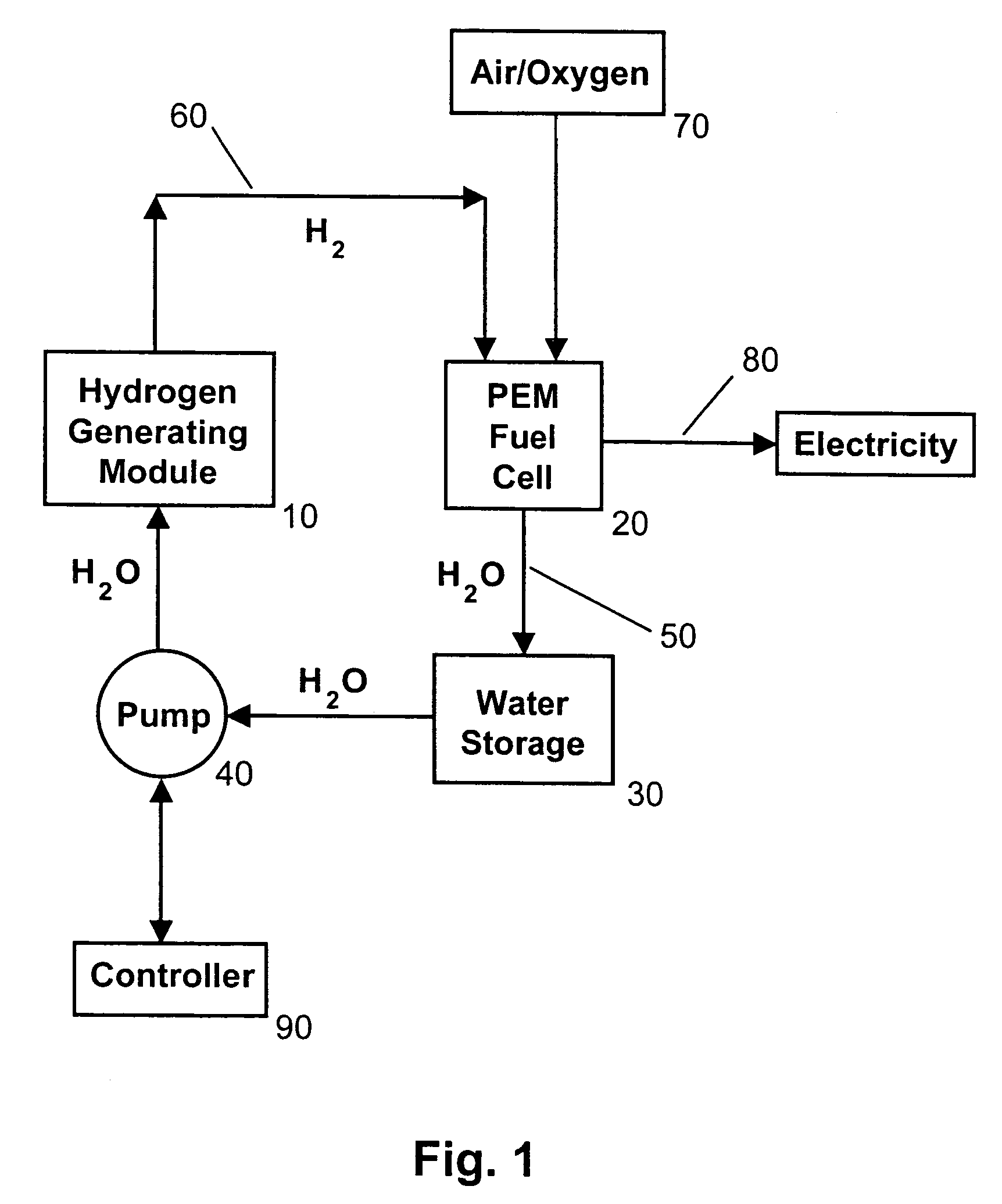Method of generating hydrogen gas from sodium borohydride
a technology of sodium borohydride and hydrogen gas, which is applied in the direction of electrochemical generators, borates, mechanical equipment, etc., can solve the problems of cyrogenic cooling, heavy and bulky gas cylinders, and high cost of metal hydrides, and achieve rapid and complete reaction
- Summary
- Abstract
- Description
- Claims
- Application Information
AI Technical Summary
Benefits of technology
Problems solved by technology
Method used
Image
Examples
Embodiment Construction
[0027]The present invention solves the problem of crust formation (i.e., caking, scaling) of the surface of solid sodium borohydride particles, granules, caplets, or pellets from the reaction product sodium metaborate (i.e., borax) during hydrogen production by using micro-disperse particles of solid sodium borohydride. The micro-disperse particles can be in the form of microspheres having a substantially uniform diameter less than 100 microns. Alternatively, the micro-disperse particles can have a substantially uniform diameter in the range of about 1-10 microns, and preferably 3-5 microns. The phrase “micro-disperse” means that the fuel particles are in the 1-100 micron size range, and are non-agglomerated (i.e., dispersed).
[0028]The fuel particles can be packed in a simple cubic pattern. About 52% of the volume would be solid, with the other 48% being empty space (i.e., interstices or pores). These interstices allow water, either in the form of liquid water, a fine mist of water,...
PUM
| Property | Measurement | Unit |
|---|---|---|
| diameter | aaaaa | aaaaa |
| particle sizes | aaaaa | aaaaa |
| diameter×6 | aaaaa | aaaaa |
Abstract
Description
Claims
Application Information
 Login to View More
Login to View More - R&D
- Intellectual Property
- Life Sciences
- Materials
- Tech Scout
- Unparalleled Data Quality
- Higher Quality Content
- 60% Fewer Hallucinations
Browse by: Latest US Patents, China's latest patents, Technical Efficacy Thesaurus, Application Domain, Technology Topic, Popular Technical Reports.
© 2025 PatSnap. All rights reserved.Legal|Privacy policy|Modern Slavery Act Transparency Statement|Sitemap|About US| Contact US: help@patsnap.com



